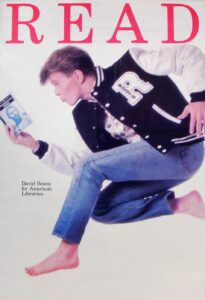Advanced Creative Writing – Fiction
ENGL 334
 This course, which is intended for anyone interested in locating and developing his/her own voice as a writer, will serve as a continuation of the work you’ve already completed in previous creative writing course(s). Though the course will be run mostly as a workshop—that is, we’ll be taking a look at your writing, providing feedback individually and as a group—we will also spend a good amount of time reading and responding to contemporary, published work. As always, the questions will be: what makes this particular piece successful? What on the page was engaging you? What makes it interesting? Unique? We’ll look closely at the way language is mobilized, how characters are created, how voice is deployed, and how tension is established in a narrative. We will also take a close look at narrative structure. The aim of this course is threefold: to become more familiar with the way fiction “works,” to introduce you to the idea of reading as a writer, and to provide you with an audience of critically engaged and receptive readers for your own work.
This course, which is intended for anyone interested in locating and developing his/her own voice as a writer, will serve as a continuation of the work you’ve already completed in previous creative writing course(s). Though the course will be run mostly as a workshop—that is, we’ll be taking a look at your writing, providing feedback individually and as a group—we will also spend a good amount of time reading and responding to contemporary, published work. As always, the questions will be: what makes this particular piece successful? What on the page was engaging you? What makes it interesting? Unique? We’ll look closely at the way language is mobilized, how characters are created, how voice is deployed, and how tension is established in a narrative. We will also take a close look at narrative structure. The aim of this course is threefold: to become more familiar with the way fiction “works,” to introduce you to the idea of reading as a writer, and to provide you with an audience of critically engaged and receptive readers for your own work.
The first half of this course we will be focusing on the techniques of realism, and will write and read more “grounded” work; the second half we will turn toward the experimental in form and subject matter, and embrace the strange and less conventional. In other words, we will begin in Kansas, and make our way to Oz. And we will be asking ourselves, always: how does one make art that is urgent and immediate?
A portfolio of your written work will be due, with revisions, at the end of the semester (2 short stories, 5 exercises, revision essay).
Course Packet (which will function as our anthology) includes stories by: Octavia Butler, Edward P. Jones, Daphne du Maurier, Jenny Zhang, Haruki Murakami, George Saunders, Garth Greenwell, Rebecca Curtis, Paul Yoon, Carmen Maria Machado, Aimee Bender, Kelly Link, Jim Shepard, Daniel Orozco (and others). The packet will also include craft essays by Charles Baxter, Edwidge Danticat, Gary Lutz, Toni Morrison and a selection from The Writer’s Notebook: Craft Essays from Tin House.
